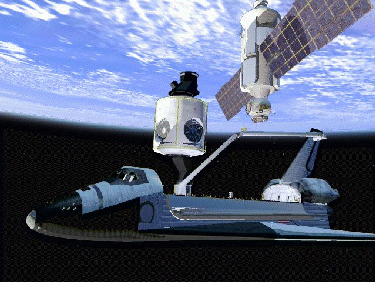
Tim Furniss/LONDON
Russia will need $6.2 billion funding over the next ten years to build and maintain its component of the International Space Station (ISS), according to Russian Space Agency (RSA) director Yuri Koptev. Some $3 billion will be spent on construction, with the remainder going on maintenance, he says.
Despite short-term difficulties in finding funds for Russia's first ISS elements, Koptev is confident that the required long-term financing can be met. The sum is comparable to the amount which Russia has spent on maintaining the Mir space station, he says.
Koptev admits that, although the Russian Control Module for the ISS is on schedule for a June launch, the Service Module may be delayed beyond December. The situation will not be known fully until electrical tests on the module are undertaken in April.
The RSA director was in Washington DC on 29 January, with other ISS international partners to sign the latest agreements for the space station with NASA.
The European Space Agency will spend about $3.4 billion on the programme up to 2004, Japan $3.5 billion and Canada $1 billion.
NASA, which is likely to require about $30 billion to construct and maintain the Space Station in its first ten years, is to request $2.7 billion in the fiscal year 1999 budget (out of a total of $13.5 billion) to support the station, including six Space Shuttle assembly flights. The agency has also requested $200 million extra funding this year to keep the ISS on track, after overspending by more than $800 million on the programme in FY1997.
Some of the loss was compensated for by taking cash from other budget areas, including aeronautics and science. NASA administrator Daniel Goldin warns never- theless that "without the transfer of the extra funds, there may be a problem with the ISS by mid-1998".
The first ISS Shuttle assembly mission is on schedule for a launch, on 6 July following the orbiter Endeavour's return on 30 January after the eighth Shuttle/Mir Mission (SMM). The STS88/Endeavour will dock the US-built Node 1 to Russia's Control Module.
The Russian and US space agencies are studying a tenth SMM later this year, to make use of the old station before the first research modules on the ISS are fully commis sioned and the Mir is evacuated and taken out of orbit in late 1999.
The NASA budget request also includes funding for the Mars Surveyor orbiter and lander missions, despite the space agency's slashing of financing for technology programmes to support future manned Moon and Mars missions. Goldin says that NASA will still investigate the possibility of human exploration of the Moon and Mars with a small, $10 million, fund. "It is our destiny," he says.
The budget also includes funds to build and launch in 2003 a spacecraft to orbit Europa, Jupiter's moon, which scientists believe has an ocean of water ice. Other highlights of the budget request include $7.9 billion to uprate Space Shuttle operations at the Kennedy Space Center, Florida.
It was also announced that additional standby funding of $1.5 billion will be set aside to support the X-33 re-usable launch demonstrator vehicle, which could lead to a replacement of the Space Shuttle, should the existing $900 million budget for 15 test flights beginning in 1999 run into difficulties. NASA will also be researching technology for further launchers under a "Future X" project.
Source: Flight International























